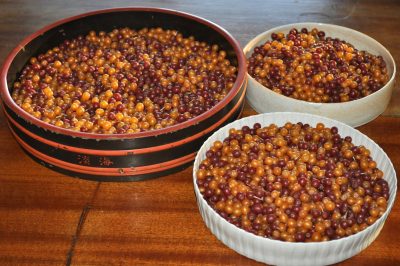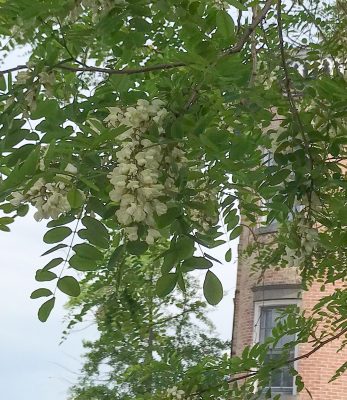Snowy Skies & Winter Colors
Snow Outside but Color Inside
A day like this, a gray sky and six inches of fluffy, fresh snow laid gently atop the white already resting on the ground, hardly turns my mind to gardening or plants. Even the greenhouse, usually a cheery horticultural retreat in winter, is dark and cold. Snow on the roof blocks what little light peeks through the gray sky, and the heater doesn’t come alive until the temperature drops to about 37° F.
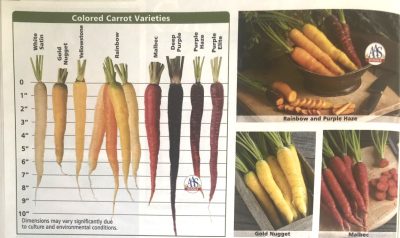
Carrots from jonnyseeds.com
And then I reach into my mailbox, and out comes summer! Seed and nursery catalogs oozing with photos of fresh carrots, heads of lettuce, juicy peaches, and sunny sunflowers. I’ve already ordered all my seeds, or so I thought until I started thumbing through more catalogs. Offerings in vegetable seeds, in particular, seem to get more interesting each year.
Take carrots, for example. Carrots have long been available in all sort of shapes and sizes. Nowadays, I can also buy seeds for white carrots (White Satin variety), carrots deep purple through and through (Deep Purple variety), and purple carrots with orange centers (Purple Haze variety).
Caulifower is also getting colorful. Its curds no longer need to be only white. The variety Cheddar is the color of orange cheddar cheese. Graffiti is a purple variety, unique among purple cauliflowers for retaining its color after being cooked. Years ago, I used to grow Violet Queen cauliflower, which turns green after being cooked and tastes very good.
I’m not saying that any of these interesting varieties taste better than less flamboyant varieties. Just sayin’ . . . they’re interesting.
Which Hazel?
Besides perusing summer-y seed and nursery catalogs, another antidote for a gray winter day is to get outside and enjoy it. I’m hoping to do that today, to glide through wooded paths on cross-country skiis.
No doubt I will come across plants flaunting winter weather and showing signs of life —even on this gray day. Native witchhazels, the so-called “common witchhazel” (Hamamelis virginiana), ocacionally still are showing off some of their strappy yellow flower petals. 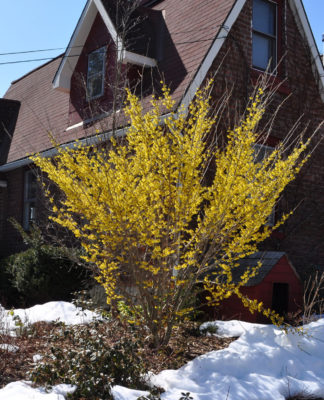 The flowers don’t exactly jump out at you so you have to get up pretty close to even notice them. Still, they are a sign of plant life in the depths of winter.
The flowers don’t exactly jump out at you so you have to get up pretty close to even notice them. Still, they are a sign of plant life in the depths of winter.
Common witchhazel typically begins blooming in September and finishes by December. How seemingly foolish! It’s been hypothesized that they bloom when they do so as not to compete with another species, vernal witchhazel (H. vernalis), where both are native. (This seems an unusual explanation because plant evolution is generally encouraged by cross breeding. That’s why an apple tree, for instance, can’t pollinate itself even though each of its flowers have both male and female parts; it has to cross with pollinate with a genetically different tree to make seeds and fruit.) Vernal witchhazel, at home in the midwest and south, begins blooming in January and might continue until spring.
Even without that competition, not much reproduction is going on with common witchhazel. It has a motley crew of pollinators: tiny wasps, fungus gnats, bees, flies, and winter moths. And even with all those matchmakers, less than 1% of flowers go on to form fruit and make seed. The seeds, 2 per fruit, are shot out of the fruits in autumn. After weevils, caterpillars, wild turkeys, and squirrels have had their fill, only about 15% of those few seeds survive. It’s a wonder that I come upon so many witchhazels in my winter glides and walks.
Looking over plant and garden notes from last year, I see that my cultivated witchhazel, the variety Arnold Promise, bloomed in my front yard in mid-March last year. That variety is a hybrid of Chinese and Japanese species. It blossoms later and its blossoms are much, much showier and more fragrant.
Sow Already?
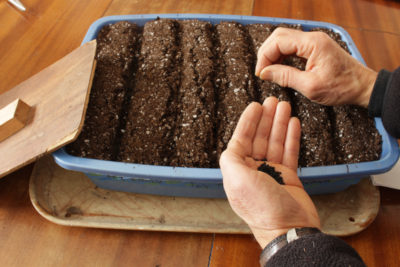
Last year, sowing onion seeds
According to my notes, I’m due to plant onion seeds sometime soon. Yes, seeds. Seeds are the only way to be able to choose from the widest selection of onion varieties. Still, seeing witchhazel flowers will not be enough to well up in me an urge to plant anything. Tomorrow will be sunny; that should do it.
Update: Except that I chose the sunny day to go skiing instead. The onion seeds can wait. Growth is so slow early in the season that, come early May, there’s little difference in size among seedlings grown from seed planted now or within the next couple of weeks.

 Backpedaling perhaps 20 years, you would have found me ordering crocosmia bulbs from a mail-order catalog. I’d seen the plants blooming in a friend’s garden in New Jersey and marveled at the graceful flower stems that arched up and out from clumps of sword-shaped leaves. Lined up near the ends of each flower stalk were pairs of tubular, hot scarlet blossoms.
Backpedaling perhaps 20 years, you would have found me ordering crocosmia bulbs from a mail-order catalog. I’d seen the plants blooming in a friend’s garden in New Jersey and marveled at the graceful flower stems that arched up and out from clumps of sword-shaped leaves. Lined up near the ends of each flower stalk were pairs of tubular, hot scarlet blossoms.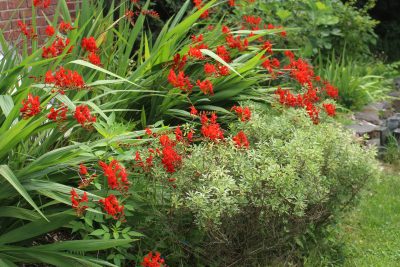
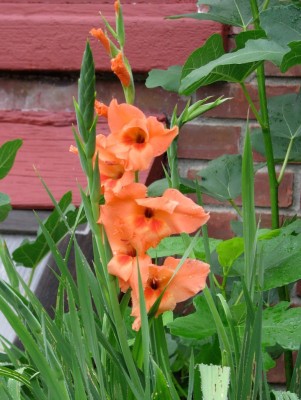
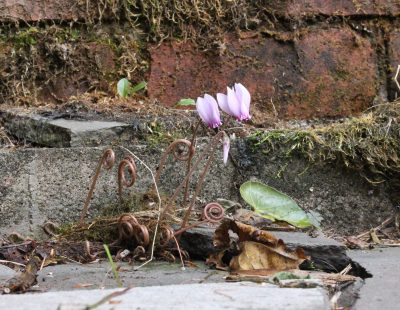

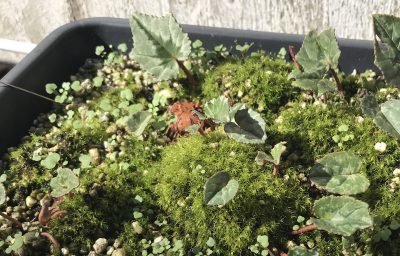 The youngsters finally were growing tubers, small bulb-like structures that will, in the future, store energy to carry the plants, dormant and leafless, through winter.
The youngsters finally were growing tubers, small bulb-like structures that will, in the future, store energy to carry the plants, dormant and leafless, through winter.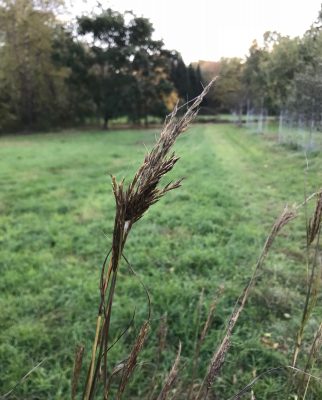 Not that some of the seeds wouldn’t self-sow near the mother plans, but seedlings that do sprout under natural conditions are subject to competition for light, nutrients, and water from other plants.
Not that some of the seeds wouldn’t self-sow near the mother plans, but seedlings that do sprout under natural conditions are subject to competition for light, nutrients, and water from other plants.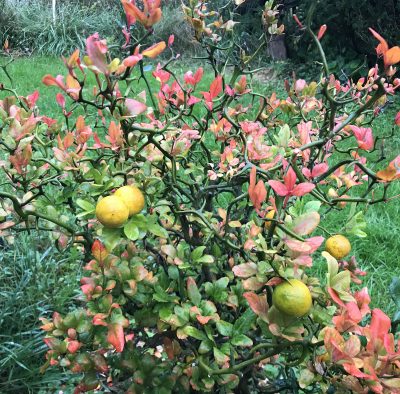
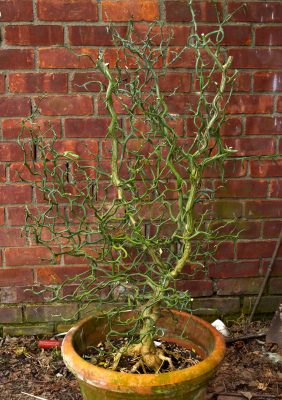
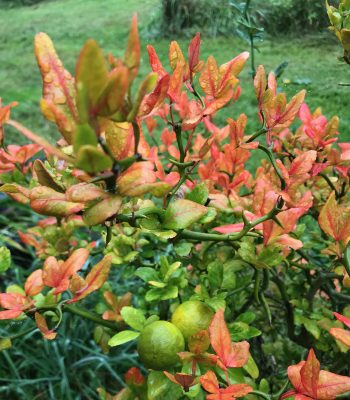
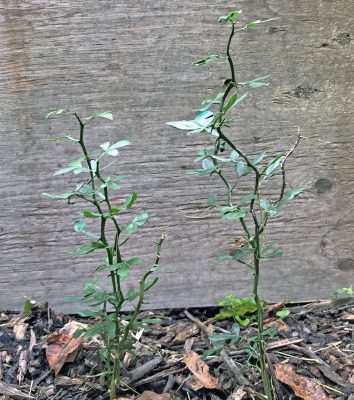
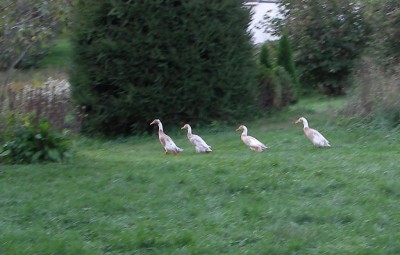 Also enjoying this awful weather are the oat cover crops that I’ve sown in some of my vegetable beds. The oats are especially lush and green, as is your and my lawn grass. The same goes for beds I recently planted with lettuce, radishes, arugula, turnips and other cool weather vegetables.
Also enjoying this awful weather are the oat cover crops that I’ve sown in some of my vegetable beds. The oats are especially lush and green, as is your and my lawn grass. The same goes for beds I recently planted with lettuce, radishes, arugula, turnips and other cool weather vegetables.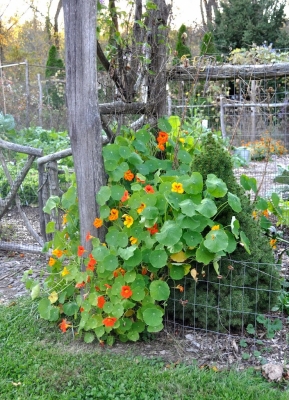
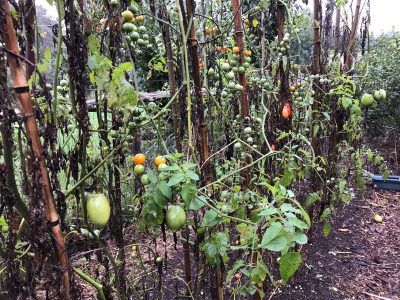
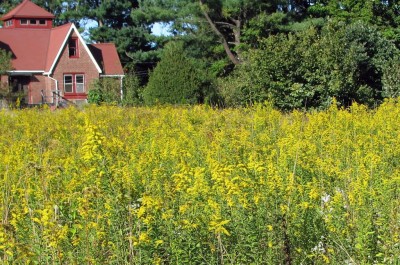 Goldenrod gets the blame for its showy, yellow blossoms during this allergy season. But the true culprit is ragweed, which goes unnoticed because it bears only small, green flowers.
Goldenrod gets the blame for its showy, yellow blossoms during this allergy season. But the true culprit is ragweed, which goes unnoticed because it bears only small, green flowers.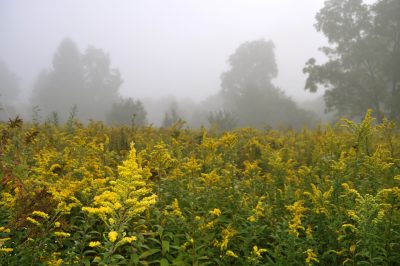
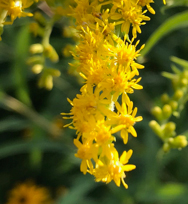
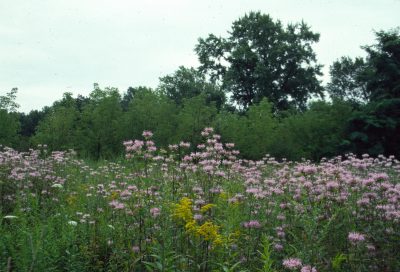
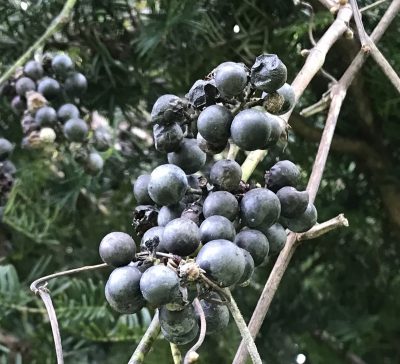
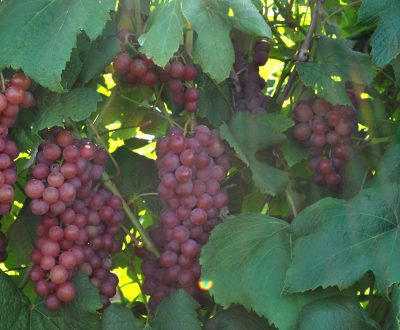
 All papyrus have a very distinctive and attractive appearance. The base of the plant is a clump of grassy leaves from which rise tall, leafless stalks which are capped by grassy-leaved mopheads looking something like the ribs of an umbrella. A houseplant relative of papyrus, Cyperus alternifolius, is commonly called umbrella plant.
All papyrus have a very distinctive and attractive appearance. The base of the plant is a clump of grassy leaves from which rise tall, leafless stalks which are capped by grassy-leaved mopheads looking something like the ribs of an umbrella. A houseplant relative of papyrus, Cyperus alternifolius, is commonly called umbrella plant.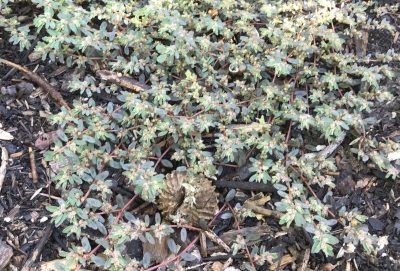 The definitive identifier for this weed is the way the stems spread out, flat, on top of the ground. In sun, no part of the plant rises more than a half an inch above ground level.
The definitive identifier for this weed is the way the stems spread out, flat, on top of the ground. In sun, no part of the plant rises more than a half an inch above ground level.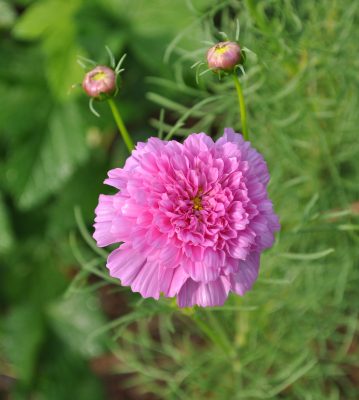 As a cosmos fan, I figured I’d try Rose Bon Bon in spite of the fact that the flowers are double, which means they have multiple rows of petals. More complex and, hence, less cosmo-ish.
As a cosmos fan, I figured I’d try Rose Bon Bon in spite of the fact that the flowers are double, which means they have multiple rows of petals. More complex and, hence, less cosmo-ish.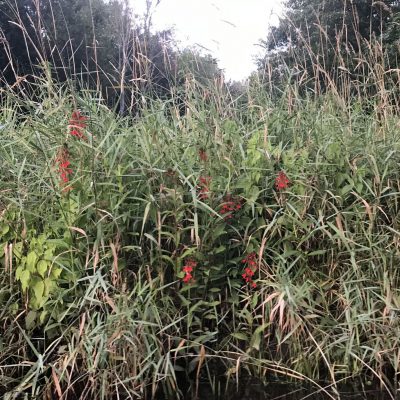 More than I have ever seen in the wild. (In Chanticleer Garden outside Philadelphia is a wet meadow planted thickly with cardinal flowers.)
More than I have ever seen in the wild. (In Chanticleer Garden outside Philadelphia is a wet meadow planted thickly with cardinal flowers.)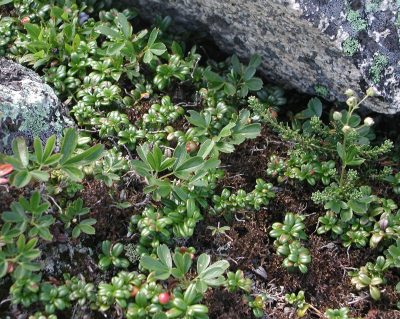
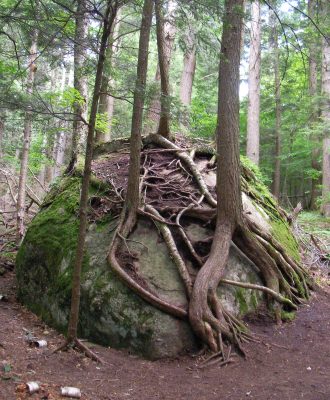
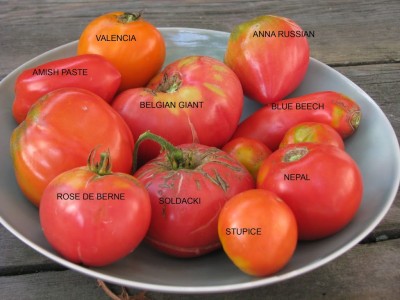 (Compost is all my vegetables get.) And perhaps focussing more on what food really tastes like. Does Sugarbuns supersweet really taste like corn. Or a candy bar?
(Compost is all my vegetables get.) And perhaps focussing more on what food really tastes like. Does Sugarbuns supersweet really taste like corn. Or a candy bar?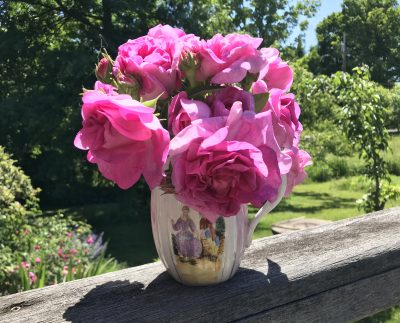 Descriptions of Rose de Rescht tell how it blossoms repeatedly through the season; not my rose. I finally honed down my rose’s identity from among the choices suggested by a number of rose experts based on photos and descriptions I had sent them.
Descriptions of Rose de Rescht tell how it blossoms repeatedly through the season; not my rose. I finally honed down my rose’s identity from among the choices suggested by a number of rose experts based on photos and descriptions I had sent them. And the fragrance! Intense, and my favorite of all roses. Rose d’Ipsahan is a variety of Damask rose and has the classic fragrance of that category of rose.
And the fragrance! Intense, and my favorite of all roses. Rose d’Ipsahan is a variety of Damask rose and has the classic fragrance of that category of rose.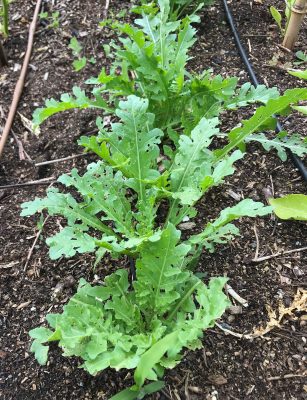 More important, Italian arugula tolerates heat better. As my rows of common arugula are sending up seed stalks, the Italian arugula just keeps pumping out new leaves.
More important, Italian arugula tolerates heat better. As my rows of common arugula are sending up seed stalks, the Italian arugula just keeps pumping out new leaves.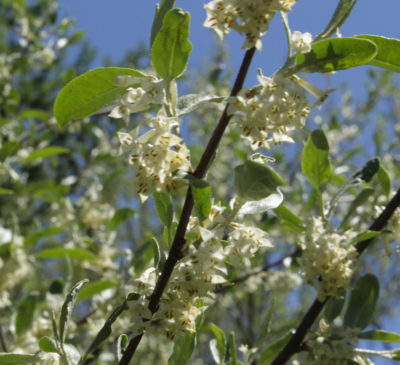 The plants were autumn olives (Elaeagnus umbellata), shrubs whose fine qualities I’m reluctant to mention for fear of eliciting scorn from you knowledgable readers.
The plants were autumn olives (Elaeagnus umbellata), shrubs whose fine qualities I’m reluctant to mention for fear of eliciting scorn from you knowledgable readers.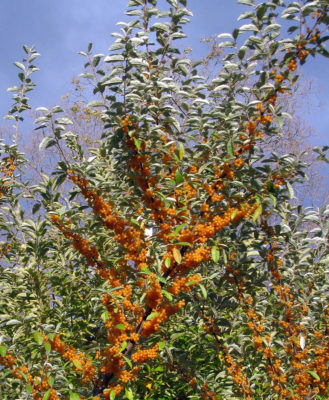 Those fruits are very puckery until a little after they turn red, but then become quite delicious, and healthful.
Those fruits are very puckery until a little after they turn red, but then become quite delicious, and healthful.